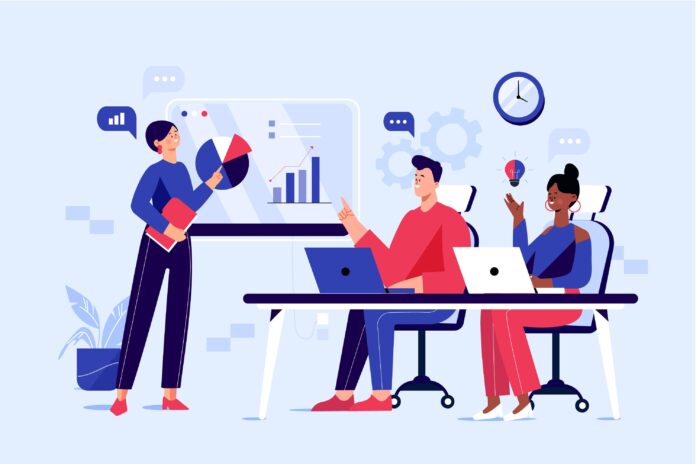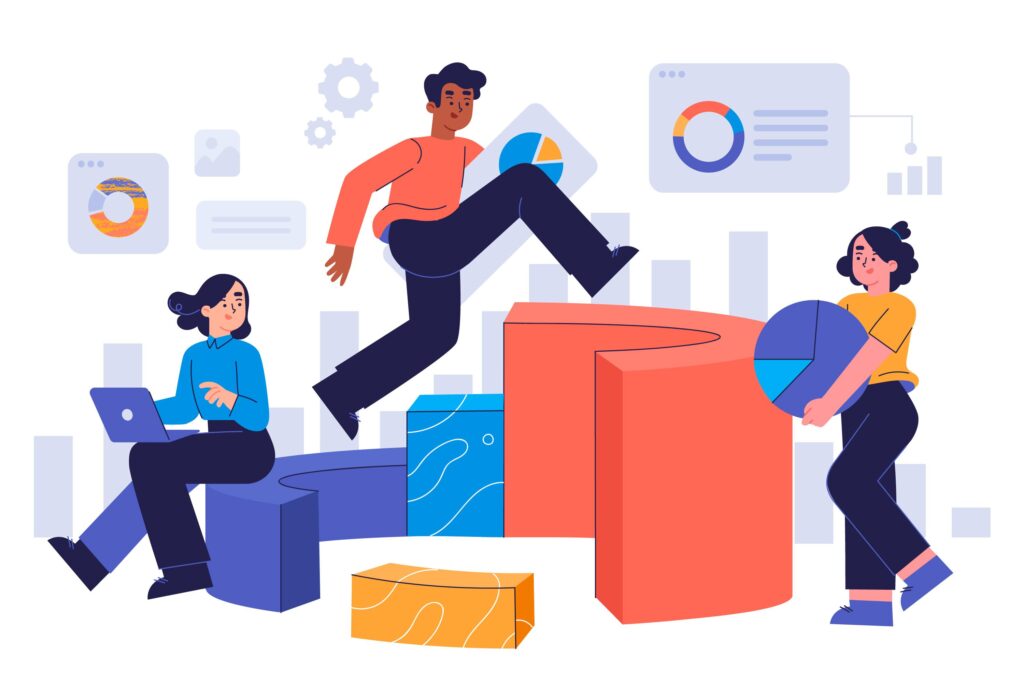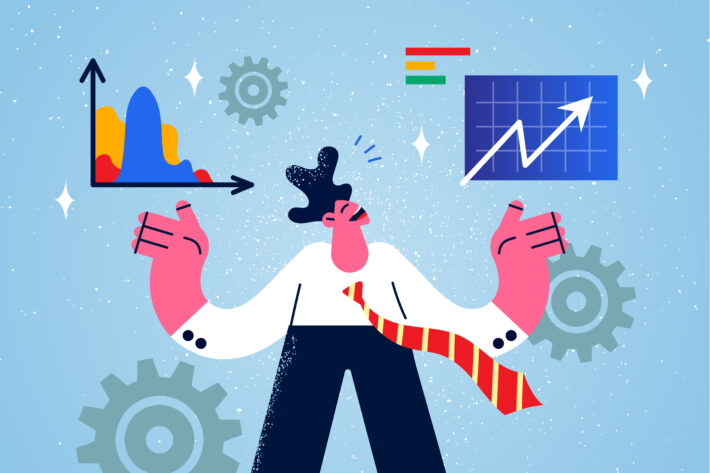How HRMS Software Enhances Workplace Culture and Productivity

Imagine a workplace where onboarding is a breeze, communication flows effortlessly, and employee needs are met instantly. This isn’t a pipe dream – it’s the potential of your HRMS software. By harnessing the full power of your HR platform, you can cultivate a thriving workplace culture that fosters employee engagement and skyrockets productivity. Let’s explore how to unlock these hidden gems and elevate your workforce.
What is HRMS Software?
HRMS stands for Human Resource Management System. It’s a software suite designed to streamline and automate various tasks within the HR department. Imagine it as a digital hub for all things employee-related, helping HR professionals manage the workforce more efficiently.
Here’s a breakdown of what HRMS software typically offers:
- Core HR functionalities: This includes tasks like payroll processing, employee benefits administration, and managing leave requests. By automating these repetitive processes, HR professionals save significant time and effort.
- Streamlined workflows: HRMS software connects different HR functions into a single platform. This eliminates the need for manual data entry across various systems, reducing errors and improving efficiency.
- Data centralization: Employee information, performance records, and other HR data are stored securely in a central location. This allows for easy access, reporting, and analysis.
How could an HR Professional Benefit from using HRMS software?
HR professionals can leverage HRMS software in a variety of ways to streamline their workflows, improve accuracy, and gain valuable insights. Here are some key benefits:
- Increased Efficiency: HRMS automates time-consuming HR tasks, freeing up professionals to focus on strategic initiatives.
- Improved Accuracy: HRMS ensures centralized storage of employee data, minimizing errors and inconsistencies.
- Enhanced Decision-Making: HRMS provides real-time data and analytics to inform strategic decisions across the organization.
- Simplified Compliance: HRMS helps ensure adherence to labor laws and regulations through automated tracking and reporting.
- Improved Employee Self-Service: HRMS offers portals that empower employees to manage their own data and requests, reducing the HR workload.
- Stronger Talent Management: HRMS can streamline recruitment, onboarding, and performance management processes.
Overall, HRMS software can be a powerful tool for HR professionals, helping them to work more efficiently, make better decisions, and create a more positive employee experience.
How does HRMS Software differ from HRIS and HCM?
HRIS, HRMS, and HCM are terms that often get used interchangeably, but there are some subtle distinctions between them. Here’s a breakdown:
HRIS (Human Resource Information System):
HRIS is the foundational layer, acting as a central database system for storing and managing all employee data. Think of it as a digital filing cabinet for employee information like payroll, benefits, and contact details. HRIS focuses on data organization and record-keeping.
HRMS (Human Resource Management System):
An HRMS builds on the capabilities of an HRIS. It takes that employee data and provides a wider range of functionalities to manage core HR processes. This might include things like payroll processing, time and attendance tracking, and benefits administration. An HRMS goes beyond data storage and offers tools to automate tasks and workflows within the HR department. It might include features like:
- Recruitment management (applicant tracking, job postings)
- Performance management (goal setting, feedback tools)
- Time and attendance tracking
- Self-service portals for employees (accessing paystubs, updating personal information)
HCM (Human Capital Management):
HCM is the most comprehensive suite, encompassing all aspects of HR management. An HCM system integrates HRIS and HRMS functionalities, but goes even further by offering strategic features like:
- Talent management (workforce planning, succession planning)
- Learning and development programs
- Workforce analytics and reporting (identifying trends, making data-driven decisions)
- Employee engagement surveys
Ultimately, the best HR software for your organization depends on your specific needs and size.
What are the Different Types of HRMS Software?
HRMS software can be broadly categorized into two main types based on their deployment model:
- On-premise HRMS: This type of HRMS software is installed on the company’s own servers and IT infrastructure. This gives companies more control over their data and security, but it also requires a significant investment in hardware, software, and IT expertise to maintain and update the system.
- Cloud-based HRMS: Cloud-based HRMS software is delivered over the internet, so there is no software to install or maintain on-site. This makes it a more scalable and affordable option for businesses of all sizes. Cloud-based HRMS systems are also typically easier to use and update than on-premise systems.
| Feature | On-Premise HRMS | Cloud-Based HRMS |
| Deployment Model | Installed on company servers | Hosted by a third-party vendor |
| Data Security | More control over data security | Relies on vendor’s security measures |
| Cost | Typically more expensive | Typically less expensive |
| Scalability | Less scalable | More scalable |
| Maintenance | Requires more IT resources to maintain | Less IT maintenance required |

How to Choose the Right HRMS Software for your Business?
Choosing the right HRMS software is crucial for streamlining our HR processes and boosting your overall business efficiency. Here’s a roadmap to guide you through the selection process:
1. Understand Your Needs:
- Identify HR Tasks: Pinpoint the specific HR processes that are bogging you down. Is it manual data entry for payroll, a chaotic onboarding process, or difficulty tracking employee performance? Focusing on these pain points will guide your feature selection in later stages.
- Employee Headcount: The number of employees you have will influence the system’s capacity and potentially the cost. HRMS software often scales based on user numbers.
- Budgeting: Be realistic about what your company can afford. HRMS solutions can range from free, limited options to comprehensive, enterprise-level suites.
2. Research Options:
- Industry-Specific Solutions: Consider HRMS software designed for your specific industry. These solutions may cater to specialized compliance needs or workflows relevant to your field.
- Free Trials & Demos: Take advantage of free trials and demos offered by vendors to get a hands-on feel for the software and see if it aligns with your needs.
3. Consider Features:
- Go Beyond the Basics: While core features like employee data management are essential, explore additional functionalities that can enhance your HR processes. Some essential features include Employee Data Management, Payroll Integration, Leave Management, Time Tracking, Performance Management, Applicant Tracking, Employee Self-Service Portals, Learning Management, Reporting & Analytics, Benefits Administration, Compliance Management, Employee Engagement Tools, and Workforce Analytics.
- Scalability: Consider if the HRMS can grow with your business. Will it be able to accommodate an increase in employees or new feature needs in the future?
4. Assess User Interface:
- User Experience (UX) Matters: A user-friendly interface is crucial for both HR administrators and employees. Look for an HRMS that is intuitive, easy to navigate, and offers clear instructions.
- Mobile Optimization: Ensure the HRMS is optimized for mobile devices, allowing HR personnel and employees to access it on the go.
5. Check Integration:
- Seamless Data Flow: Integration with existing software like payroll systems or accounting software can save time and eliminate errors caused by manual data entry.
- Open APIs: Look for HRMS with open APIs (Application Programming Interfaces) that allow for easier integration with custom applications or future software additions.
6. Mobile Accessibility:
- Remote Work Considerations: Mobile accessibility allows for greater flexibility, especially for employees who work remotely or have flexible schedules.
- Employee Self-Service: Mobile access can empower employees with self-service options like requesting time off, submitting expense reports, or accessing company documents.
7. Evaluate Customer Support:
- Support Channels: Reliable customer support is essential for addressing any issues or clarifying questions that may arise. Look for options like email, phone, or live chat support.
- Support Availability: Consider the availability of support (24/7, business hours, etc.) to ensure you can get help when needed.
8. Consider Cost:
- Total Cost of Ownership (TCO): Factor in not just the base price but also implementation costs, ongoing subscription fees, and any additional user fees.
- Cost vs. Value: Choose an HRMS that offers features and functionalities that justify its cost and provide a positive return on investment (ROI) for your business.
By thoroughly considering these elaborated points, you’ll be well-equipped to make an informed decision and select the HRMS software that perfectly complements your company’s unique needs and goals.
Popular HRMS Software Solutions for All Types Of Businesses
Here are 10 popular HRMS software solutions for businesses of all types, along with brief product introductions, special features, and pricing:
1. ADP Workforce Now
- ADP Workforce Now is a comprehensive HRMS solution that automates HR processes, improves data management, and enhances employee engagement and productivity.
- Special Features: Employee data management, payroll, leave management, time tracking, and performance management.
- Pricing: Contact ADP for a customized quote based on your business needs.
2. Gusto
- Gusto is an easy-to-use HRMS solution for small businesses that offers payroll, benefits administration, and HR services.
- Special Features: Payroll processing, benefits administration, employee onboarding, time tracking, and HR resources.
- Pricing: Plans start at $39 per month, plus $6 per employee per month.
3. Namely
- Namely is a modern HR platform that combines HR, payroll, and benefits administration into one solution.
- Special Features: Employee data management, payroll, benefits administration, time tracking, and performance management.
- Pricing: Contact Namely for a customized quote based on your business needs.
4. Zoho People
- Zoho People is a cloud-based HRMS solution that offers employee data management, attendance tracking, and performance management.
- Special Features: Employee self-service portal, attendance tracking, performance management, and time tracking.
- Pricing: Plans start at $1 per employee per month.
5. Workday
- Workday is a cloud-based HRMS solution that offers a unified system for finance, HR, and planning.
- Special Features: Employee data management, payroll, benefits administration, time tracking, and performance management.
- Pricing: Contact Workday for a customized quote based on your business needs.
6. BambooHR
- BambooHR is a user-friendly HRMS solution that offers employee data management, time tracking, and performance management.
- Special Features: Employee self-service portal, time tracking, performance management, and HR reporting.
- Pricing: Contact BambooHR for a customized quote based on your business needs.
7. SAP SuccessFactors
- SAP SuccessFactors is a cloud-based HRMS solution that offers a comprehensive suite of HR tools, including recruitment, onboarding, and performance management.
- Special Features: Employee data management, payroll, benefits administration, time tracking, and performance management.
- Pricing: Contact SAP for a customized quote based on your business needs.
8. UKG Pro
- UKG Pro (formerly UltiPro) is a cloud-based HRMS solution that offers a range of HR tools, including payroll, benefits administration, and performance management.
- Special Features: Employee data management, payroll, benefits administration, time tracking, and performance management.
- Pricing: Contact UKG for a customized quote based on your business needs.
9. Ceridian Dayforce
- Ceridian Dayforce is a cloud-based HRMS solution that offers a unified system for HR, payroll, and benefits administration.
- Special Features: Employee data management, payroll, benefits administration, time tracking, and performance management.
- Pricing: Contact Ceridian for a customized quote based on your business needs.
10. Paychex Flex
- Paychex Flex is a cloud-based HRMS solution that offers a range of HR tools, including payroll, benefits administration, and time tracking.
- Special Features: Employee data management, payroll, benefits administration, time tracking, and performance management.
- Pricing: Plans start at $39 per month, plus $5 per employee per month.
Investing in the right HRMS can significantly reduce your HR team’s workload, regardless of if it’s your first system or a replacement. This frees them to prioritize what matters most: your employees. By carefully considering the factors mentioned earlier, you can choose an HRMS that perfectly aligns with your specific needs, budget, and requirements. This will ensure a smooth and successful implementation across your entire organization.



